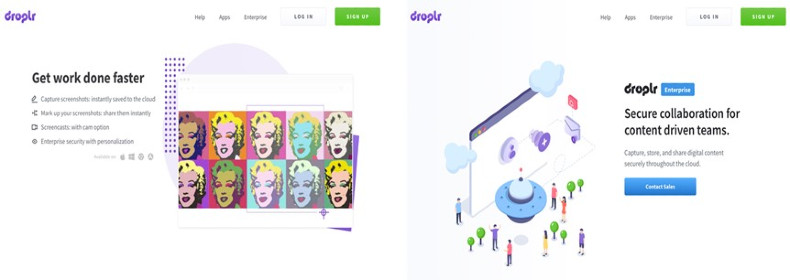Many of today's most successful SaaS companies rely on a product-led growth (PLG) go-to-market strategy to scale their business. Think Dropbox, Slack, and, most recently, the pandemic-fueled growth of Zoom.
What does PLG mean? Simply put, such companies rely on their products (and the appeal of their user experiences) to hook customers and drive growth across all stages of the funnel.
Since the product itself—rather than ad dollars or sales outreach—is the growth engine, PLG is a cost-effective growth strategy, freeing companies (at least initially) from the need for more sales reps or a bigger marketing budget.
A typical PLG motion involves winning over users with a freemium offering: Customers get to use the product right away and experience real product value without having to jump through hoops to get started.
Although this approach may require a larger up-front investment in R&D to create a great product, it can scale with fewer team resources.
Many PLG companies eventually scale to the point where they begin to target larger deals, and their model breaks out into two tiers: self-serve and enterprise sales motion. But just because a company suddenly has a new focus on enterprise customers doesn't mean it should abandon its self-serve users.
However, each group has different needs and consequently requires different marketing and enablement strategies.
The most effective B2B marketers will recognize the differences between enterprise and self-serve customers and personalize their messaging and approach accordingly.
Here are three of those major differences.
1. Company Size
It's critical you treat a B2B buyer from a Fortune 500 company differently from how you treat someone at a small company or an individual consumer.
You want your sales team to talk to enterprise buyers because those leads are looking for solutions to specific enterprise needs, such as enhanced security, collaboration features, and dedicated support.
It's important for a PLG company's homepage, to offer personalized headings and use cases that are targeted to the type of customer visiting their website. Consider this example from Droplr's homepage that demonstrates values for both tracks.

The page for individual users is all about speed and ease of use, whereas the enterprise landing page begins with security and includes use cases from customers, such as Intercom and TED.
2. Buyer Intent
The two segments of customers also have different intentions when visiting a website. Individual buyers are ready to access the product immediately, and they view sales demos as unnecessary friction; enterprise buyers, however, are often in research mode and require more information.
Personalized call-to-action buttons are a great way to funnel visitors into the appropriate track and make it obvious what their next step is. For the self-serve customer, "try for free" or "sign up now" are good options, whereas "talk to sales" or "get a demo" set immediate expectations for enterprise visitors.
From the very first click, self-serve prospects who may never spend a dollar with the company are now less likely to waste the time of your marketing or sales team, and enterprise prospects aren't left wondering what their next step should be.
3. Stakeholders
Small companies usually have one person or a small group making buying decisions. They don't need sign-off to try out a free product and can get started immediately without speaking to a sales rep, providing an easy path forward.
Enterprises, on the other hand, likely have an initial person doing research, another person up the chain to weigh in with feedback, and yet another decision-maker to give the final sign-off. It makes more sense to offer enterprise teams a way to gather more information or schedule a meeting with a sales rep.
Live chat services, for instance, present an opportunity to personalize the user journey for enterprise buyers, and to route qualified leads to the right sales rep. If a visitor fits better with self-serve options, a chatbot that answers common questions might do the trick with only a one-time setup, or marketers can choose to forego a chatbox altogether for self-serve customers.
The easiest and most straightforward way for marketers to personalize their website for enterprise and freemium leads is by using firmographic information about their website visitors—primarily, the size of the company the visitor works for. Once marketers decide on a target threshold that defines an enterprise user (such as working for a company with 500 employees or more), they can customize accordingly. They can serve visitors from companies above that number with enterprise-specific messaging, whereas those below that threshold are nudged toward self-serve options.
Although marketers can build out tailored landing pages by hand for each segment, a quicker path is using additional marketing data (such as location or tech stack) and machine-learning to automatically populate personalized messaging across homepage and landing pages. The result is one website that serves each group of prospects, depending on who is visiting the site at any given time.
* * *
The bottom line is that to maximize pipeline, marketers have to personalize the experience for each kind of customer by creating two distinct tracks that work together. Optimizing CTAs, headlines, chats, and more for each track preserves a self-serve funnel without letting enterprise deals slip through the cracks.
More Resources on B2B Product Strategy
Three Reasons You Should Start Your Marketing Strategy While Your Product Is Still in Development
Flip It, Turn It, 'Bop It!' The Traditional Marketing/Sales Funnel Is Out, So What Really Works?




